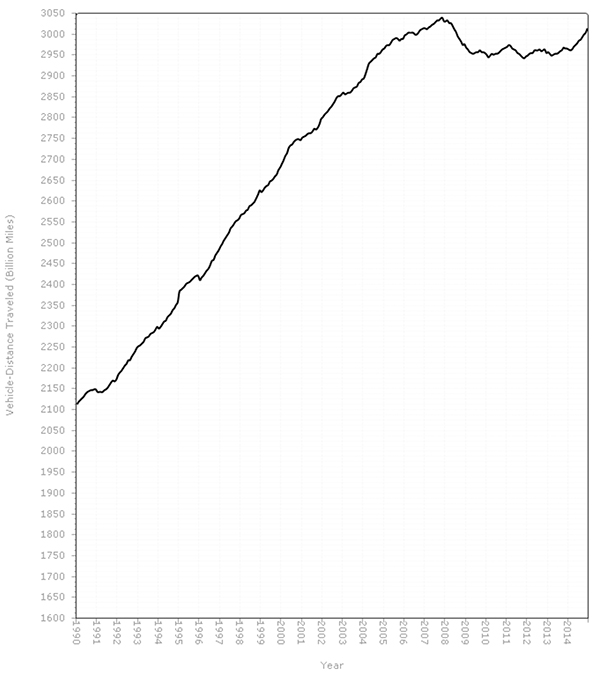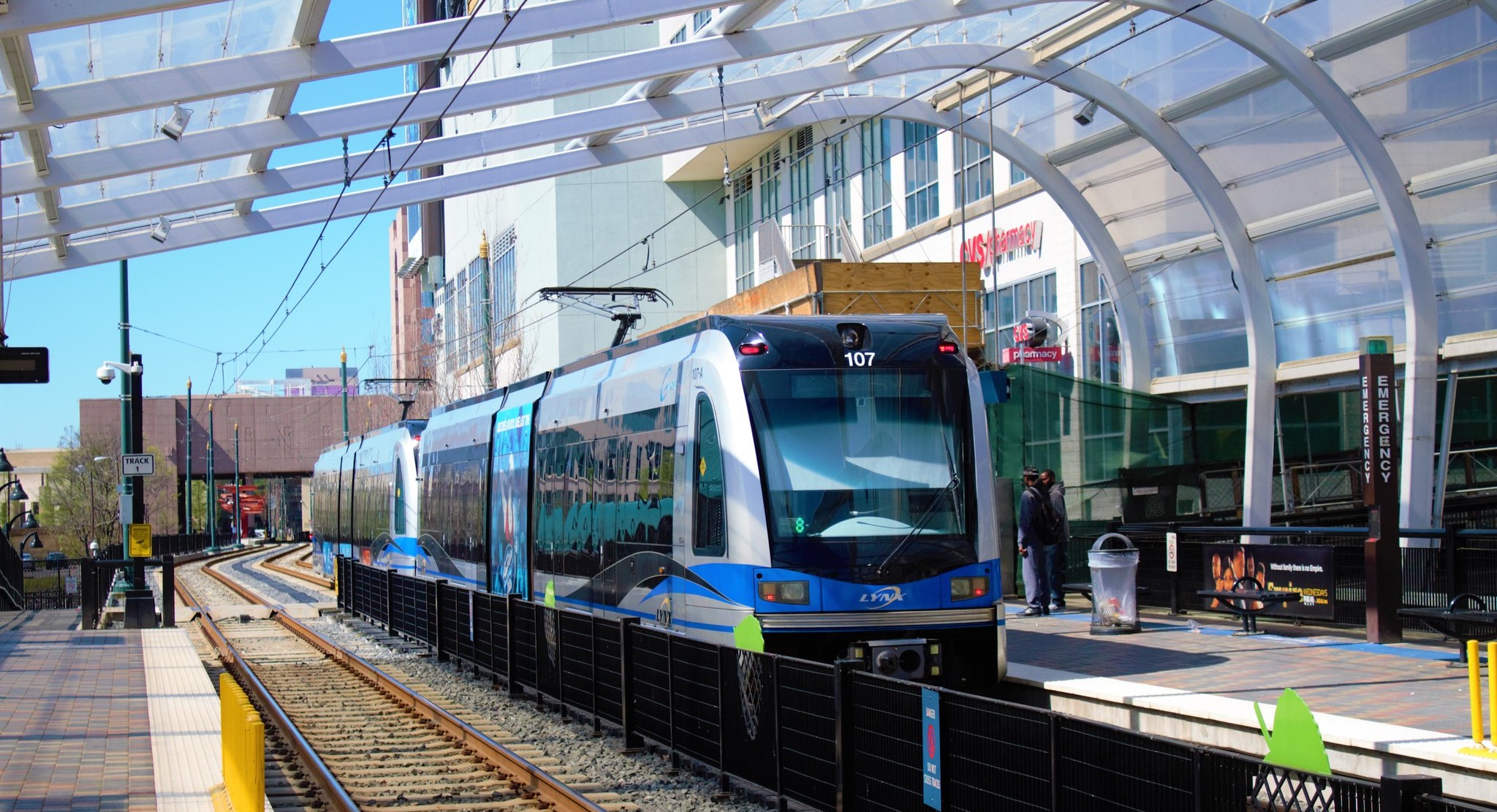
With gas prices plummeting and employment figures rising, America's per capita driving rate increased in 2014 for the first time in nearly a decade. But experts warn driving is far from back to its previous historical pattern.
According to new data from the Federal Highway Administration, total driving mileage climbed 1.7 percent in 2014, higher than the rate of population growth. Gas prices are likely a major factor. In the first half of 2014, driving rose only about 0.8 percent, about the rate of population growth, compared to the same period in 2013. But during the second half of the year, as gas prices dropped substantially, total miles driven shot up 2.5 percent.
Phineas Baxandall, a researcher with the U.S. Public Interest Research Group, says the increase needs to be put in perspective: This doesn't look like a return to historical driving trends. Prior to about 2005, traffic rose at a fairly steady rate, with some fluctuation around recessions. But this latest increase doesn't signal a return to that path of constant growth -- the kind that has been continually used to justify highway projects.
"This past year saw big increases in employment and a precipitous dip in gasoline prices, yet the rate of increase in driving was still smaller than the normal increases for six decades before 2005," Baxandall said in a statement. "The total volume of driving in 2014 still fell below 2007 levels, even despite the nation’s larger population."
Of course, policy makers could also act to spare Americans from the burden of increasing traffic, congestion, and emissions. "The volume of driving could be even lower if public policies in coming years give Americans more choices about whether or not to drive," Baxandall added. "We hope that this past year’s data does not distract public leaders from the profound changes underway in transportation.”





